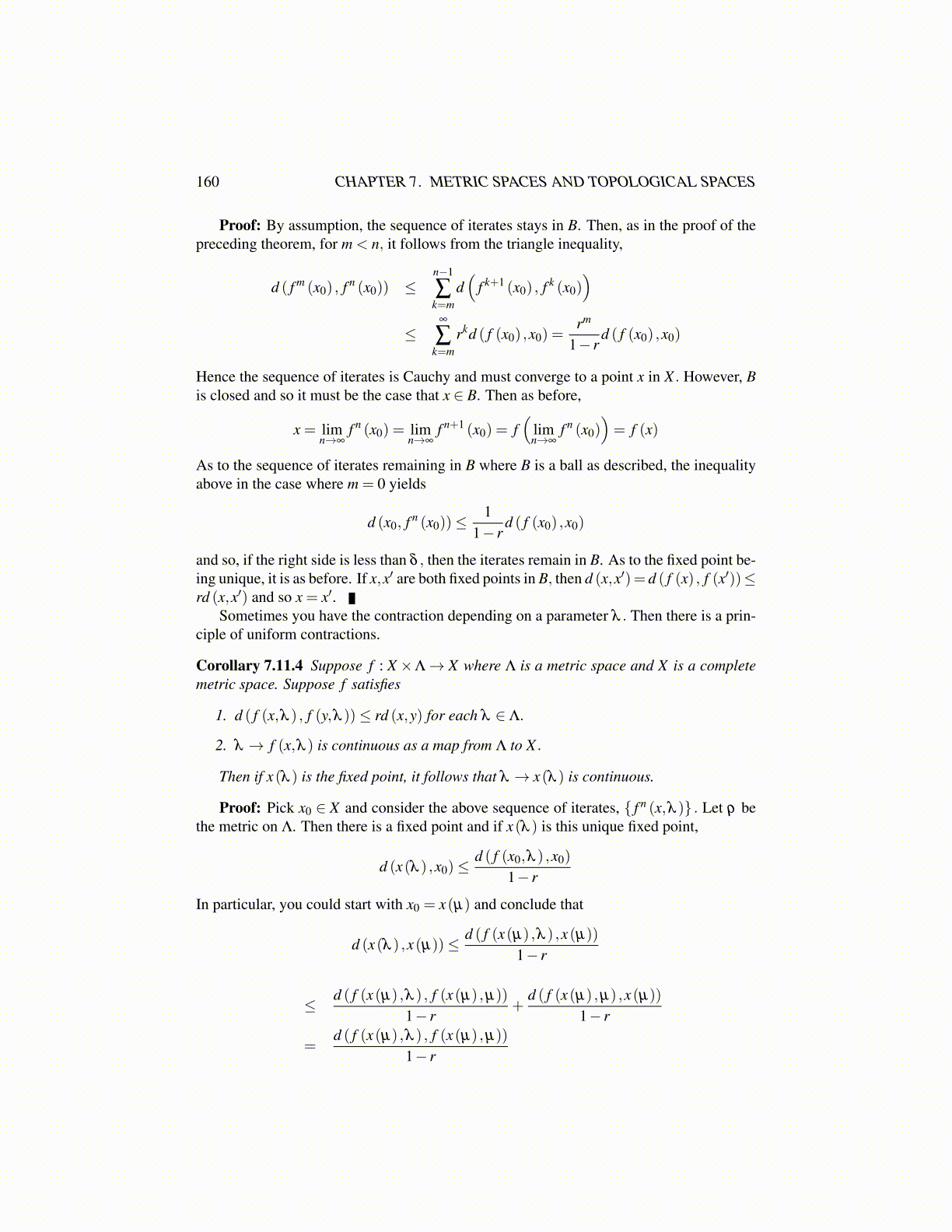
160 CHAPTER 7. METRIC SPACES AND TOPOLOGICAL SPACES
Proof: By assumption, the sequence of iterates stays in B. Then, as in the proof of thepreceding theorem, for m < n, it follows from the triangle inequality,
d ( f m (x0) , f n (x0)) ≤n−1
∑k=m
d(
f k+1 (x0) , f k (x0))
≤∞
∑k=m
rkd ( f (x0) ,x0) =rm
1− rd ( f (x0) ,x0)
Hence the sequence of iterates is Cauchy and must converge to a point x in X . However, Bis closed and so it must be the case that x ∈ B. Then as before,
x = limn→∞
f n (x0) = limn→∞
f n+1 (x0) = f(
limn→∞
f n (x0))= f (x)
As to the sequence of iterates remaining in B where B is a ball as described, the inequalityabove in the case where m = 0 yields
d (x0, f n (x0))≤1
1− rd ( f (x0) ,x0)
and so, if the right side is less than δ , then the iterates remain in B. As to the fixed point be-ing unique, it is as before. If x,x′ are both fixed points in B, then d (x,x′)= d ( f (x) , f (x′))≤rd (x,x′) and so x = x′.
Sometimes you have the contraction depending on a parameter λ . Then there is a prin-ciple of uniform contractions.
Corollary 7.11.4 Suppose f : X ×Λ→ X where Λ is a metric space and X is a completemetric space. Suppose f satisfies
1. d ( f (x,λ ) , f (y,λ ))≤ rd (x,y) for each λ ∈ Λ.
2. λ → f (x,λ ) is continuous as a map from Λ to X .
Then if x(λ ) is the fixed point, it follows that λ → x(λ ) is continuous.
Proof: Pick x0 ∈ X and consider the above sequence of iterates, { f n (x,λ )} . Let ρ bethe metric on Λ. Then there is a fixed point and if x(λ ) is this unique fixed point,
d (x(λ ) ,x0)≤d ( f (x0,λ ) ,x0)
1− r
In particular, you could start with x0 = x(µ) and conclude that
d (x(λ ) ,x(µ))≤ d ( f (x(µ) ,λ ) ,x(µ))1− r
≤ d ( f (x(µ) ,λ ) , f (x(µ) ,µ))1− r
+d ( f (x(µ) ,µ) ,x(µ))
1− r
=d ( f (x(µ) ,λ ) , f (x(µ) ,µ))
1− r